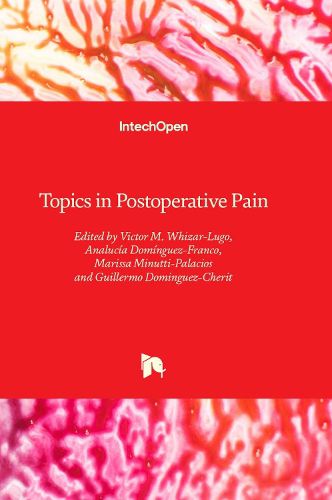Readings Newsletter
Become a Readings Member to make your shopping experience even easier.
Sign in or sign up for free!
You’re not far away from qualifying for FREE standard shipping within Australia
You’ve qualified for FREE standard shipping within Australia
The cart is loading…






This title is printed to order. This book may have been self-published. If so, we cannot guarantee the quality of the content. In the main most books will have gone through the editing process however some may not. We therefore suggest that you be aware of this before ordering this book. If in doubt check either the author or publisher’s details as we are unable to accept any returns unless they are faulty. Please contact us if you have any questions.
Currently, two-thirds of patients undergoing surgery experience acute postoperative pain (POP), which increases the possibility of immediate postoperative complications and facilitates the development of chronic POP. Post-surgical pain does not have a useful biological function, so it must be prevented, avoided, and/or eliminated. The objective of the rational management of acute pain after surgery is to facilitate the rapid recovery of patients with a prompt integration into their usual preoperative activities. The global crisis of opioid abuse has forced us to use other analgesic drugs as well as regional analgesia techniques that are part of effective multimodal analgesia. The non-pharmacological approach has also gained importance in the comprehensive management of acute POP. This book reviews advances in the understanding, management, and complications of POP.
$9.00 standard shipping within Australia
FREE standard shipping within Australia for orders over $100.00
Express & International shipping calculated at checkout
This title is printed to order. This book may have been self-published. If so, we cannot guarantee the quality of the content. In the main most books will have gone through the editing process however some may not. We therefore suggest that you be aware of this before ordering this book. If in doubt check either the author or publisher’s details as we are unable to accept any returns unless they are faulty. Please contact us if you have any questions.
Currently, two-thirds of patients undergoing surgery experience acute postoperative pain (POP), which increases the possibility of immediate postoperative complications and facilitates the development of chronic POP. Post-surgical pain does not have a useful biological function, so it must be prevented, avoided, and/or eliminated. The objective of the rational management of acute pain after surgery is to facilitate the rapid recovery of patients with a prompt integration into their usual preoperative activities. The global crisis of opioid abuse has forced us to use other analgesic drugs as well as regional analgesia techniques that are part of effective multimodal analgesia. The non-pharmacological approach has also gained importance in the comprehensive management of acute POP. This book reviews advances in the understanding, management, and complications of POP.